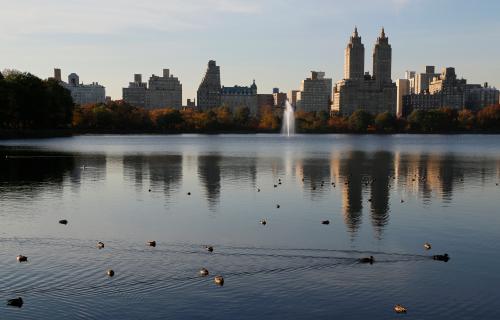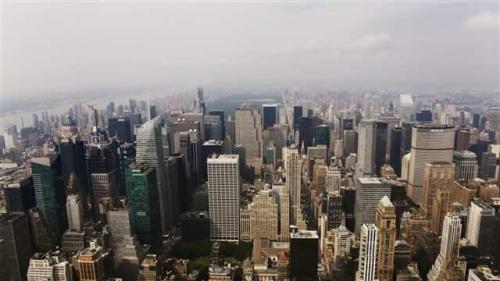At a secret location high above Brooklyn, a pair of cameras steadily capture pictures of Manhattan every ten seconds, checking building “burps” (unexpected increases in emissions) in order to learn more about how New York City works.
In shared space at Google’s office in SoHo graduate students are creating new apps that cull information from social media to alert reports to newsworthy events, while at MTA headquarters in Brooklyn, budding data engineers collaborate with city agencies and industries to use big data to solve big urban problems.
And on a sliver of land between Manhattan and Queens, university officials are trying to invent new kinds of buildings flexible enough to meet demands for space and computing power that no one can anticipate.
This is what New York City’s Applied Sciences schools are creating, some three years after the announcement of the first campus. Both Cornell Tech, a collaboration between Cornell University and Israel’s Technion, and NYU’s Center for Urban Science and Progress graduated their first master’s degree classes earlier this spring. Joining Cornell Tech, CUSP, and Columbia University’s Institute for Data Science and Engineering, a fourth applied sciences campus will bring students from Carnegie Mellon’s Integrative Media Program to Steiner Studios in the Brooklyn Navy yard next fall.
New York City’s tech sector has enjoyed significant growth since the end of the Great Recession, with the number of jobs up by one-third and venture capital dollars doubling. The Applied Sciences effort is too new to have either contributed meaningfully to this surge or to fill the urgent demand for engineers —the permanent campuses won’t be completed for several more years and the graduating classes so far have been tiny—but it’s an important part of the emerging technology industry in the city. As one tech leader explained earlier this year in an article in Capital New York magazine, “The announcement of the Cornell Tech center clearly was a major catalyst in focusing attention on the New York tech ecosystem.” A New York venture capitalist similarly commented, “Schools play an important long term roll in the growth of the talent pool, but it’s not as directly related as ‘See, a school opened up, let’s start a company or let’s move.’ It’s all positive and moves the ecosystem forward.”
But the point of Applied Sciences was not just to feed the tech ecosystem right now, but instead to invent and advance industries decades in the future. The cameras looking at emissions in downtown and midtown Manhattan (which will soon have counterparts in other cities across the world) are gathering data to help researchers and eventually entrepreneurs better understand how cities work, so that they can solve big problems down the road. It’s not just about the next urban app but about inventing things that people can barely imagine.
The seeds planted in immediate response to the Great Recession and the dearth of federal leadership will bear fruit decades in the future—whether that’s new technology development in New York, or a rising generation of immigrant leaders in Houston, or a massive transit investment in Denver. That’s why we believe that the “Metropolitan Revolution” represents a major change in the economy and politics of our nation. And in the meantime, there’s so much to learn about those burping buildings.





Commentary
How the Metro Revolution Is Inventing the Future in New York
January 5, 2015